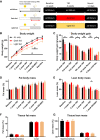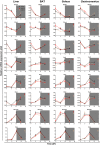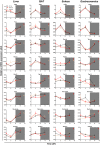After-Effects of Time-Restricted Feeding on Whole-Body Metabolism and Gene Expression in Four Different Peripheral Tissues
- PMID: 32475077
- PMCID: PMC7496197
- DOI: 10.1002/oby.22830
After-Effects of Time-Restricted Feeding on Whole-Body Metabolism and Gene Expression in Four Different Peripheral Tissues
Abstract
Objective: Epidemiological studies show that shift workers are at increased risk for type 2 diabetes. As modern societies increasingly require shift work, it seems crucial to determine whether there are long-lasting health effects of rotational shifts.
Methods: This study examined the after-effects of 4 weeks of time-restricted feeding (TRF) during the light period (= light-fed) in rats, an animal model for shift work. This study also included a TRF-dark (= dark-fed) control group. The aligned and misaligned feeding times of light and dark feeding are associated with poor and good health outcomes, respectively. Several physiological measures were monitored continuously; blood, liver, brown adipose tissue, and soleus and gastrocnemius muscle were collected following 11 days of ad libitum (AL) feeding after ending the TRF.
Results: In the dark-fed animals, the day/night differences in food intake, activity, and respiratory exchange ratio were still enhanced at the end of the experiment. Light-fed animals displayed the smallest day/night differences for these measures, as well as for body temperature. In both the light- and dark-fed animals, rhythms in plasma glucose, nonesterified fatty acids, and gene expression had not fully recovered after 11 days of AL feeding. Importantly, the effects on gene expression were both tissue and gene dependent.
Conclusions: Our data indicate that rotational shift workers may have an increased risk of long-lasting disturbed rhythms in several physiological measures after a period of shift work. Clearly, such disturbances may harm their health.
© 2020 The Authors. Obesity published by Wiley Periodicals LLC on behalf of The Obesity Society (TOS).
Conflict of interest statement
The authors declared no conflict of interest.
Figures





References
Publication types
MeSH terms
LinkOut - more resources
Full Text Sources
Research Materials

